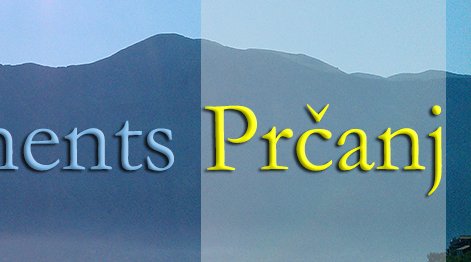About Prčanj
Prčanj was first mentioned in 13th century by the name of
Perzano or Persano, and it was home of well known Boka seamen.
While under the rule of the Venetian Republic, Perzagno gained
fame in a rather unique way. By the end of the sixteenth century
the administration noticed that sailors from here were able to
sail to Venice in less time than the government ships. As a
result, it was then decided that the port be given the
responsibility for the permanent mail service of the Republic.
This was further established by a decree of 1625 that praises
the inhabitants of the port for their conscientious and
effective handling of the State mail. The decree was of
tremendous significance for the town, as it freed its citizens
from manual labor, a mandatory form of state service at that
time.  The decree officially made Perzagno a naval town, and its
duties to the State were henceforth of an exclusively maritime
nature. The importance of reliable mail service was of
tremendous value to the Venetian Republic. Perzagno became the
port from which the mail from Istanbul, which arrived over land
through Montenegro, continued seaborne towards Venice. The decree officially made Perzagno a naval town, and its
duties to the State were henceforth of an exclusively maritime
nature. The importance of reliable mail service was of
tremendous value to the Venetian Republic. Perzagno became the
port from which the mail from Istanbul, which arrived over land
through Montenegro, continued seaborne towards Venice.
Today, Prčanj is
treasury of many cultural and historical monuments which impress
visitors with their architecture and splendor. Among them
especially dominant is the Parish Church, dedicated to the birth
of Virgin Mary. It is also the biggest one in Bay of Kotor. It
was built from cut stone by design of Venetian architect
Bernadine Makarucia. Today, next to the Church are busts of
Njegoš, Andrija Zmajević, Josip Juraj Štrosmajer, Andrija
Kačić-Miošić, Franjo Ucelinij, Jozo Đurović, captain and
leader of national revival in Boka, as well as Ivo Vizin, seaman
who sailed the world.
Because of good micro climate, there was built the health
facility "Vrmac" specialized for treatments of asthma,
bronchitis and allergy diseases. Natural factors of treatments
are being used, mainly air rich with essential oils and aerosols
of seawater. |
 |
|
|
|













